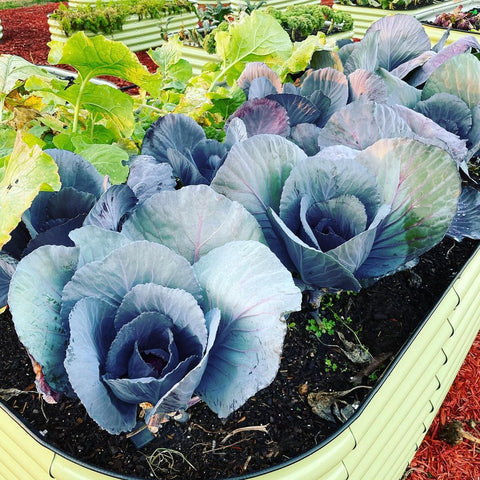- Gardening is a fulfilling and rewarding hobby that enables you to connect with nature, lower stress, and, quite literally, enjoy the fruits of your effort. While many gardeners concentrate on the usual spring and summer planting seasons, raised beds' adaptability makes year-round gardening viable. This blog post will go through the advantages of farming year-round on raised beds and how to get the most out of your seasonal crops the
- entire year
- Benefits of Raised Bed Gardening
- Before diving into the year-round gardening aspect, let's briefly discuss why raised beds are a fantastic choice for any gardener:
-
Improved Soil Quality: Raised beds are filled with a customized mix of soil and compost, ensuring your plants get the best nutrients possible.
-
Better Drainage: Elevated beds allow excess water to drain away, preventing root rot and other water-related issues.
-
Weed Control: Raised beds are easier to maintain and weed since they are contained and organized.
-
Extended Growing Season: The soil in raised beds warms up faster in the spring and stays warmer in the fall, extending your growing season.
- Now, let's focus on maximizing seasonal harvests year-round.

- Year-Round Gardening Strategies
-
Crop Selection: Choose crops that are suited to your local climate and the time of year you plan to grow them. Some cool-season vegetables like lettuce, kale, and broccoli thrive in early spring and late fall, while warm-season crops like tomatoes and peppers are best for summer.
-
Succession Planting: After harvesting one crop, immediately replant the space with another. This method allows you to maximize the use of your raised beds throughout the year.
-
Cold Frames and Row Covers: Extend your growing season by using cold frames or row covers to protect plants from frost. These simple structures create a microclimate that keeps the temperature several degrees warmer, allowing you to grow crops well into the winter.
-
Mulching: Mulch helps regulate soil temperature and moisture, reducing the stress on plants during extreme weather. In the summer, mulch keeps the soil cooler and moister, while in the winter, it acts as insulation.
-
Indoor Gardening: Consider growing herbs or small vegetables indoors during the harshest winter months. A sunny windowsill or a grow light can provide enough light for your plants to thrive.

- Year-Round Gardening Calendar
- Here's a simple year-round gardening calendar to give you an idea of what you can plant in each season:
- Start with cold-hardy crops like spinach, lettuce, and peas.
- As the weather warms, transition to warm-season crops like tomatoes, peppers, and cucumbers.
- Continue harvesting warm-season crops.
- Plant late summer crops like beans and squas
- Fall (September to November):
- Plant cool-season crops such as carrots, radishes, and kale.
- Consider planting garlic for next year's harvest.

- Winter (December to February):
- Utilize cold frames or row covers for winter gardening.
- Grow hardy vegetables like carrots, spinach, and Swiss chard
-
Raised bed gardening is a rewarding and sustainable technique to enjoy seasonal fresh food all year long. You may maximize your harvests and take delight in gardening all year long by choosing your crops properly, using succession planting, and adopting season-extending strategies. So go start preparing your raised beds and enjoy the benefits of gardening all year long!
Use left/right arrows to navigate the slideshow or swipe left/right if using a mobile device



